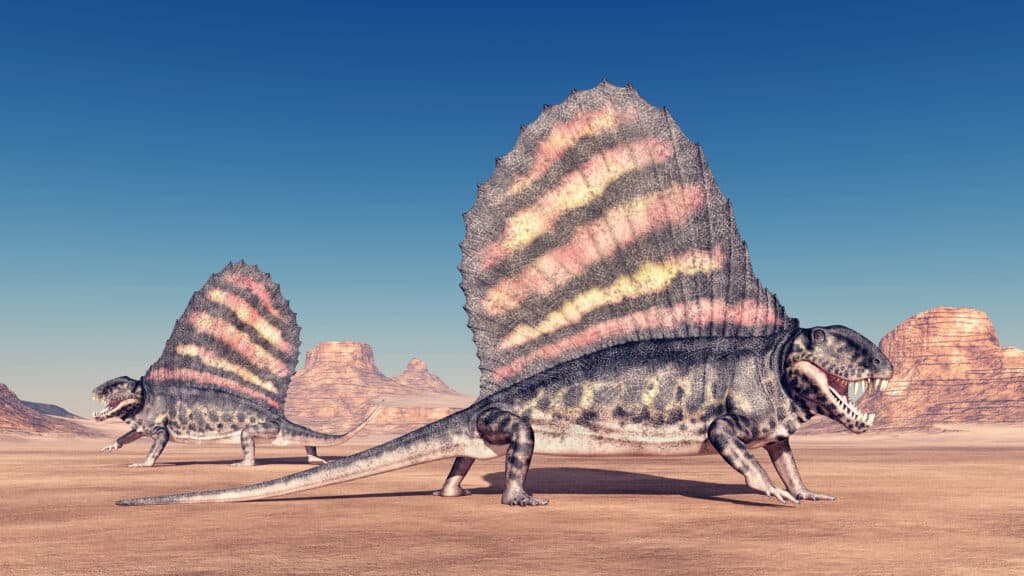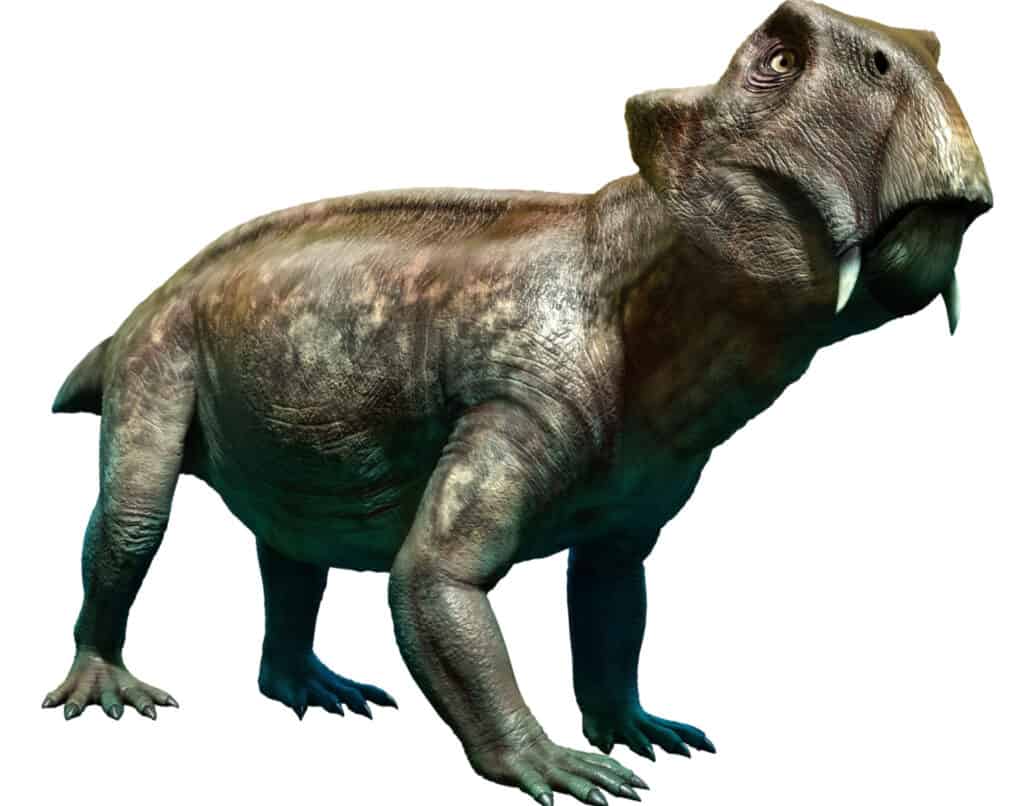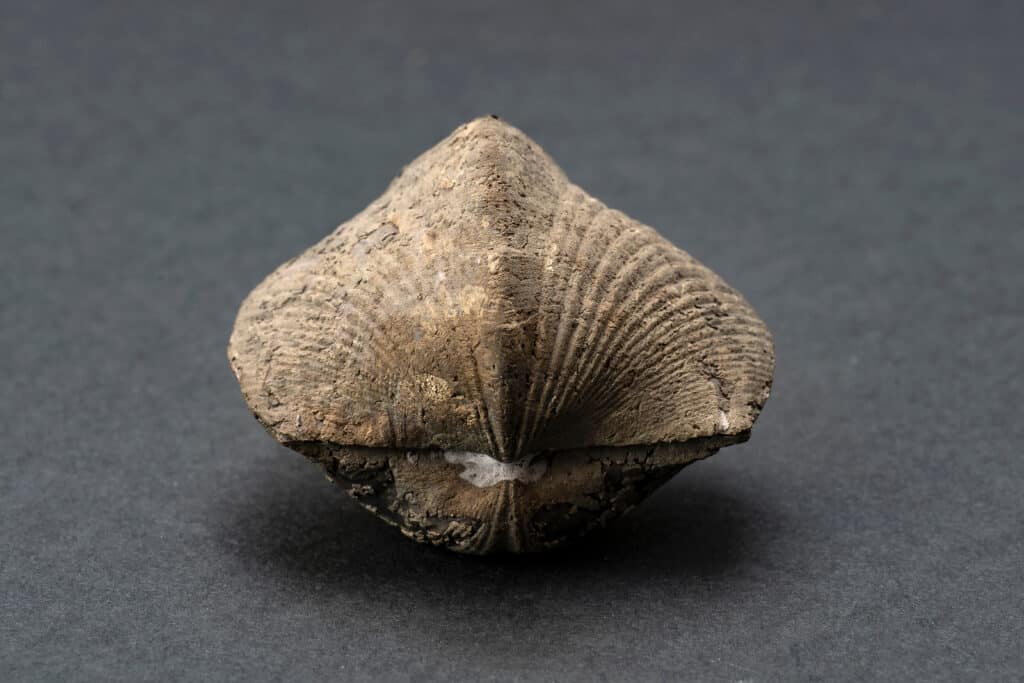The Permian Period lasted from 298.9 million years ago to the start of the Triassic Period, 251.9 million years ago. When the Early Permian epoch began, many animal lineages had just a few varieties and genera. As the environment grew warmer, these lineages gradually expanded into new varieties and subspecies. In terms of aquatic life, the Permian Period’s variety of organisms may have exceeded even that of the present. Want to learn more about animal life during this period? Discover five amazing Permian-era animals in this post!
1. Pelycosaur
The synapsids are one of the two major animal subgroups that evolved from early amniotes. Pelycosaurs were a name for early synapsids. Since it was believed that these non-mammalian synapsids descended from reptiles, classical systematics used the term “mammal-like reptiles” to describe them. Synapsids like the pelycosaur, however, are today recognized as neither reptiles nor descendants of the reptilian lineage. Today, it is more accurate to refer to them as stem mammals or as proto- or paramammals.
2. Cynodont
The cynodonts are part of the therapsid family. Pelycosaurs were superseded by therapsids as the dominant land animals in the Middle Permian. These therapsids had legs that were more vertically positioned beneath their torsos as opposed to the splayed legs of reptiles and pelycosaurs. This orientation would have produced a more mammal-like gait than the pelycosaurs’ lizard-like movement.
After the Permian-Triassic extinction event, reptiles that rapidly diversified gained an advantage over therapsids as they struggled to survive. In the Late Triassic period, which lasted from the end of the Permian period until the start of the Jurassic period, only the cynodont therapsids remained. Up to the middle of the Cretaceous Period, which started following the Jurassic period, cynodonts were alive. Approximately 125 million years ago, they finally went extinct.
3. Dimetrodon

Most species of Dimetrodon are believed to have reached anywhere between 60 and 550 pounds and measured 6 to 15 feet in length.
©iStock.com/MR1805
A genus of ancient non-mammal synapsids called Dimetrodon, which means “two measurements of teeth,” lived in the Cisuralian (Early Permian), around 295-272 million years ago. It is a member of the family Sphenacodontidae. Most of the fossils have been found in the Red Beds of Texas and Oklahoma, a geological deposit in the Southwest of the United States. Most species of Dimetrodon are believed to have reached anywhere between 60 and 550 pounds and measured 6 to 15 feet in length. The bigger species of Dimetrodon were among the biggest carnivores of the Early Permian period.
One of the main predators in the ecosystems at that time was probably Dimetrodon. They ate tetrapods like frogs and reptiles in addition to fish. Dimetrodon’s most distinctive feature was the enormous neural spine sail on its back, which was built up of elongated spikes extending from the vertebrae. It’s possible that Dimetrodon used its sail to support its spine or to regulate its body temperature. Dimetrodon is frequently misidentified as a dinosaur or a dinosaurian relative; however, it went extinct roughly 40 million years before the first dinosaurs existed.
4. Lystrosaurus

Lystrosaurus thrived in the early Triassic after surviving the Permian extinction event.
©Warpaint/Shutterstock.com
A genus of herbivorous dicynodont therapsids called Lystrosaurus, whose name means “tool for leveling or smoothing,” lived within the late Permian and Early Triassic periods. Lystrosaurus thrived in the early Triassic after surviving the Permian extinction event. They were by far the most common group of animals on land, making up as much as 95% of vertebrate animals.
The robustly built, herbivorous Lystrosaurus was roughly pig-sized. Given that its forelimbs were even more muscular than its hindlimbs, this species is thought to have been a powerful burrower that lived in tunnels. Mummified fossils found in the Karoo Basin and described in 2022 indicate that Lystrosaurus had hairless, dimpled, leathery skin.
5. Brachiopod

Only 385 of the 30,000 known prehistoric brachiopod species are still living today.
©Myriam B/Shutterstock.com
The phylum Brachiopoda, which also includes lamp shells, is made up of marine invertebrates called brachiopods. Brachiopods have two valves (shell sections) that surround the animal’s dorsal top, bottom, and side surfaces. This is in contrast to bivalve mollusks, which have shells that enclose the lateral sides. The bulk of brachiopod species is between 0.39 and 1.18 inches in length. Brachiopods have a lifespan ranging from three to over thirty years. Until they are large enough to sink to the seafloor, they feed and swim for months.
Early brachiopod lineages first appeared throughout the Cambrian, Ordovician, and Carboniferous periods, respectively. Other lineages have appeared, vanished, and sporadically experienced terrifying mass extinctions. A 2007 study found that brachiopods were highly susceptible to the Permian-Triassic extinction because they had inadequate respiratory systems and poor metabolic rates. Despite surviving this extinction, brachiopod variety, quantity, and ecological significance never recovered to their former levels. Only 385 of the 30,000 known prehistoric brachiopod species are still living today.
Conclusion
The Permian Period marks a crucial turning point in the evolution of life as well as the history of the Earth’s continents. Animal communities developed into more sophisticated systems over the middle of the Permian Period, and general diversity increased. Terrestrial plants witnessed significant diversity throughout this epoch, while insects quickly evolved as they pursued plants into new environments. Additionally, other important reptile lineages first emerged around this time.
Sadly, the worst mass extinction in Earth’s history occurred in the final phases of the Permian Period. The breadth of the hot and dry conditions resulted in a decline in Permian terrestrial and aquatic life toward the end of the epoch. Only 10% of the species were still alive as the period ended.
Up Next:
- Permian Period: Facts, Information, and Timeline
- The Triassic Period: Animals, Plants and When It Happened
- The Jurassic Period: Animals, Plants, and When It Happened
The photo featured at the top of this post is © Dziurek/Shutterstock.com
Sources
- Live Science, Available here: https://www.livescience.com/43219-permian-period-climate-animals-plants.html
- Phys, Available here: https://phys.org/news/2018-09-end-permian-extinction-earth-species-instantaneous.html
- ThoughtCo, Available here: https://www.thoughtco.com/permian-period-300-250-million-years-1091430
Thank you for reading! Have some feedback for us? Contact the AZ Animals editorial team.






